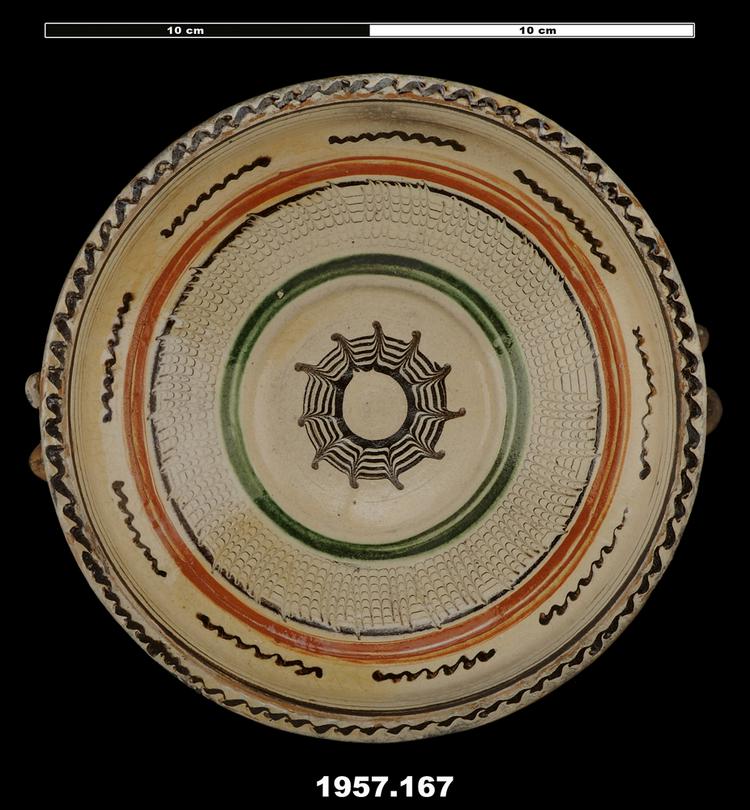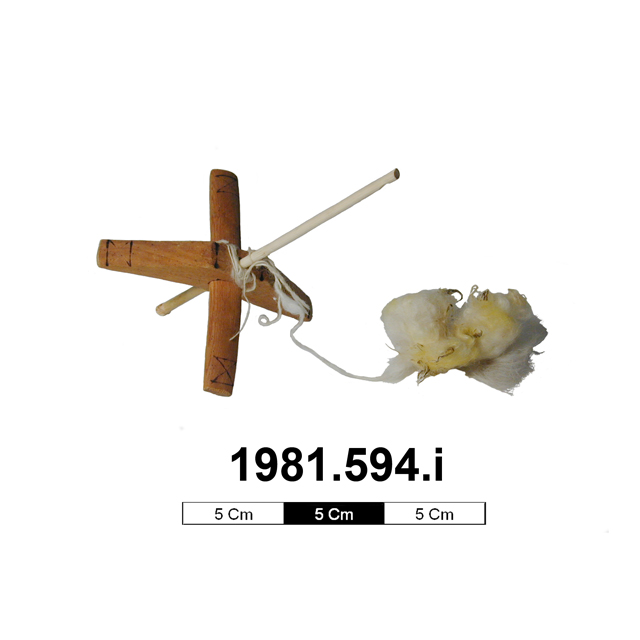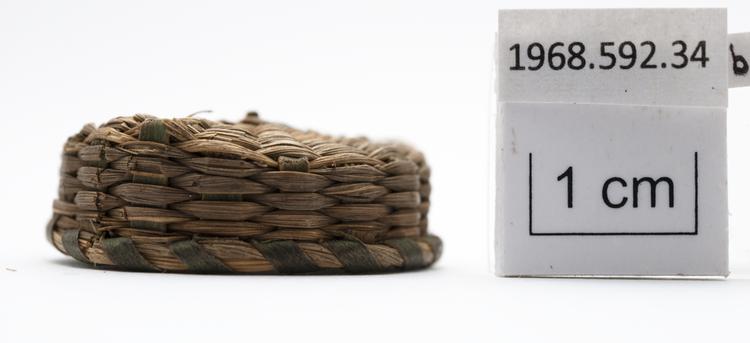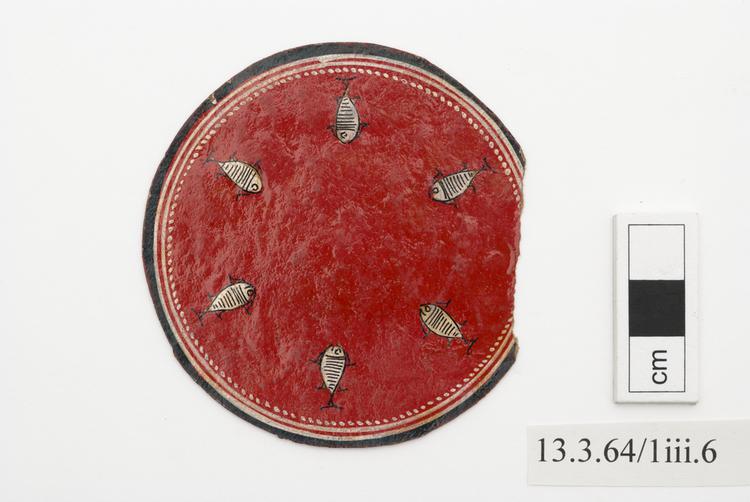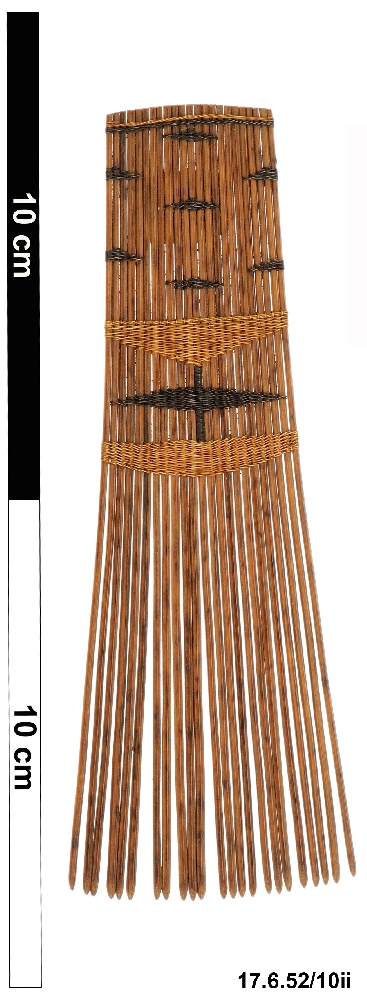
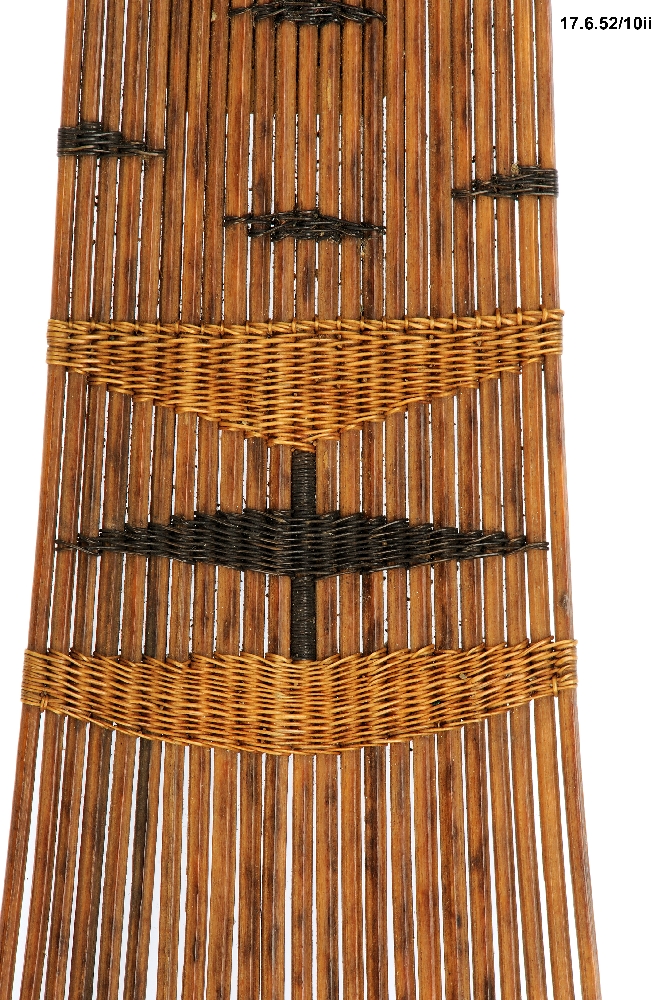
Comb made from twenty three coconut leaf midribs finely bound together with 2 colours of coconut fibre cordage with an abstract bird motif.
Pair of Coconut Wood & Fibre Combs, Helu, Tonga, Western Polynesia. All parts of these ornamental Tongan hair combs (helu) come from the coconut tree (niu, Cocos nucifera). The tines themselves are the mid-ribs of the leaflets that branch off each palm leaf’s central stem, stripped out of the leaf, dried and cut to size. These tines are bound together and separated by very finely woven fibres, which are threaded carefully between each. The mid-ribs are naturally thicker at one end than the other, and the comb-maker (tufunga helu) took advantage of this to give the comb a splayed form. Each fibre is an individual strand of coconut husk, rolled smooth to make a round thread. These fibres are immensely strong and resilient. Some fibres are dyed before use by immersing them in salty, black lagoon mud, which gives them a rich chocolate colour that nicely complements the natural honey colour. Such combs were both practical tools of self care and were worn in the hair as adornments. Coconut wood, coconut fibre. In the UK before 1850. Formerly in the private collection of the Longuet-Higgins family of Turvey Abbey.



